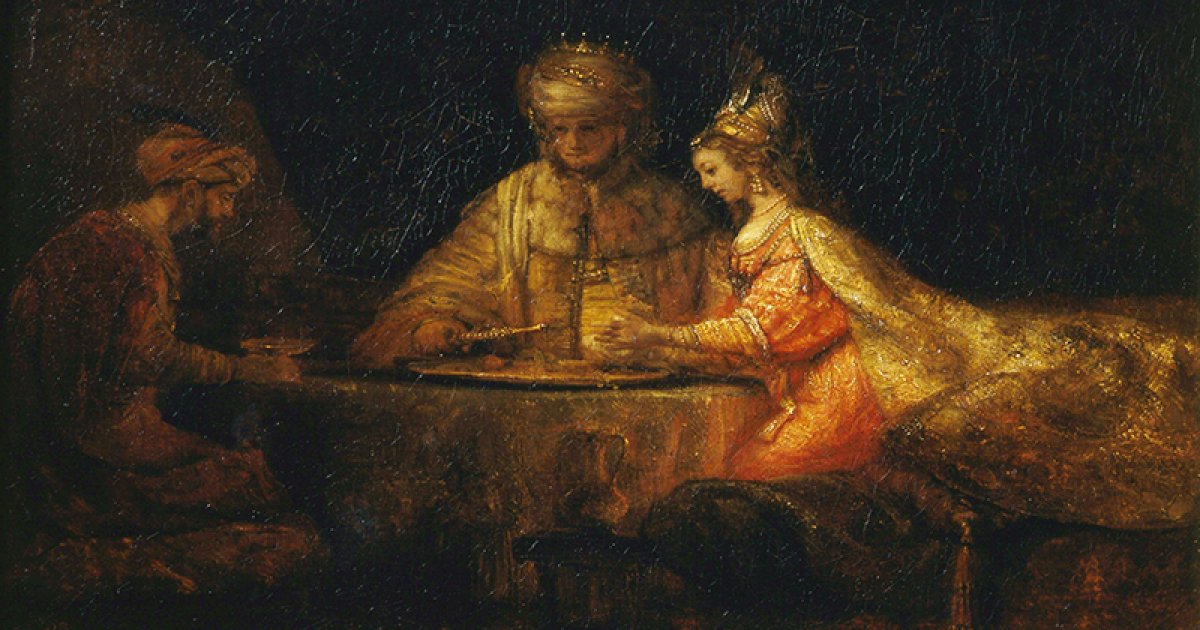PUSHKIN MUSEUM, Rembrandt Ahasuerus And Haman At The Feast Of Esther Room 10
 Language: English / USA
Language: English / USA
The painting Ahasuerus and Haman at the Feast of Esther is a masterpiece painted by Rembrandt around 1660, at the age of 54, nine years before his death.
Rembrandt, one of the greatest painters in the history of art and the most important Dutch artist, achieved the greatest results of his career in portraits of his contemporaries, in self-portraits and especially in illustrations of biblical scenes.
Ahasuerus and Haman at the Feast of Esther illustrates an episode from the Book of Esther in the Old Testament.
The Persian king Ahasuerus was married to Esther, whose cousin Mordecai, who had raised Esther as his daughter, saved the king from a plot to assassinate him. As Mordecai was Jewish, he could not prostrate himself before the king, but only before God, so the royal counselor Haman advised King Ahasuerus to have him hanged for not respecting him and resolved to exterminate the entire Jewish population in revenge. The Jews, however, were saved by the intercession of Esther herself. This rescue is still celebrated today on the feast of Purim, which was Rembrandt's inspiration for the painting, as he knew the Jewish community of Amsterdam very well. During Purim celebrations, Haman is considered the villain par excellence, and this is reflected in Rembrandt’s piece.
As you can see, only three figures appear in the painting, including Esther, on the right, who lowers her arms as she finishes her speech. See how King Ahasuerus, seated in the middle, purses his lips in anger and how Haman’s pose, on the left, reveals a sense of defeat. The distance between the king and his vizier seems enormous, while the king and queen form a united couple. The dramatic conflict between the king and his advisor is expressed through their gestures. The scene is filled with a tense atmosphere of suspense. The figure of Esther is radiant, her robe with a long train is gleaming as if it were made of precious stones. Haman, on the other hand, is in the shadows. This work undoubtedly highlights Rembrandt's great ability to bring out the emotions of his characters.
Interesting fact: The idea for the painting came to Rembrandt after he went to see the play Hester by Johannes Serwouters, which was being performed in Amsterdam at that time, telling the story of this biblical episode.



